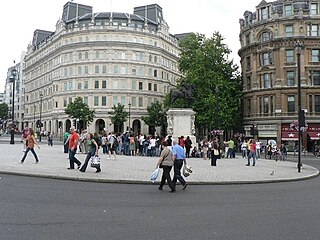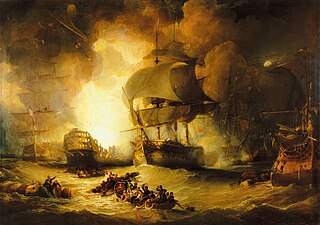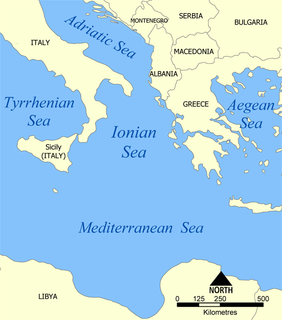
The Ionian Sea is an elongated bay of the Mediterranean Sea, south of the Adriatic Sea. It is bounded by Southern Italy including Calabria, Sicily, and the Salento peninsula to the west, southern Albania to the north, and the west coast of Greece.

Joseph Mallord William Turner, known as J. M. W. Turner and contemporarily as William Turner, was an English Romantic painter, printmaker and watercolourist. He is known for his expressive colourisations, imaginative landscapes and turbulent, often violent marine paintings.
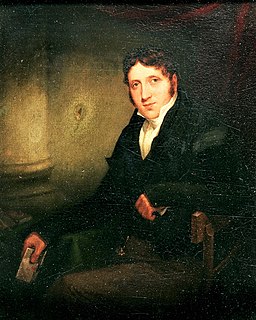
John Sell Cotman was an English marine and landscape painter, etcher, illustrator, author and a leading member of the Norwich School of painters.

Nicholas Pocock was a British artist known for his many detailed paintings of naval battles during the age of sail.

Thomas Buttersworth was an English seaman of the Napoleonic wars period who became a marine painter. He produced works to commission, and was little exhibited during his lifetime.
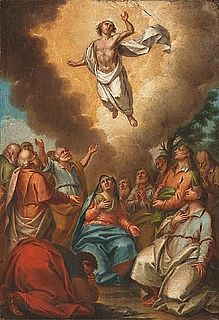
The Heptanese School of painting succeeded the Cretan School as the leading school of Greek post-Byzantine painting after Crete fell to the Ottomans in 1669. Like the Cretan school it combined Byzantine traditions with an increasing Western European artistic influence, and also saw the first significant depiction of secular subjects. The school was based in the Ionian Islands, which were not part of Ottoman Greece, from the middle of the 17th century until the middle of the 19th century.

George Philip Reinagle was an English marine painter, youngest son of Ramsay Richard Reinagle.
Joseph William Allen was an English landscape painter and art teacher, who was also active in the founding of the Society of British Artists.
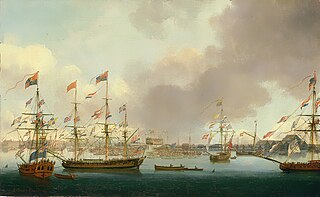
John Cleveley the Younger was a British artist and marine painter.
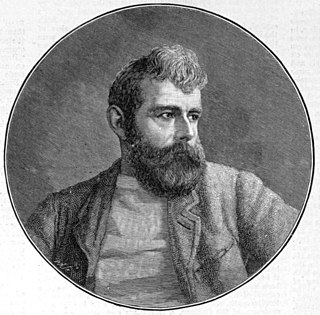
William Lionel Wyllie also known as W L Wyllie was a prolific English painter of maritime themes in both oils and watercolours. He has been described as "the most distinguished marine artist of his day." His work is in the Tate, the Royal Academy, the Imperial War Museum, the National Maritime Museum, the National Museum of the Royal Navy, and many other institutions around the world.

Edward Thomas Daniell was an English landscape painter and etcher. He grew up in Norfolk and was ordained as a priest. He is best known for his drawings made on an expedition to Lycia, in the course of which he died.
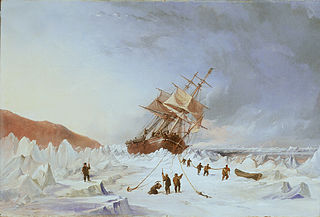
Thomas Sewell Robins was a British painter of maritime subjects.
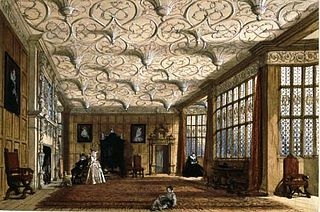
Joseph Nash was an English watercolour painter and lithographer, specialising in historical buildings. His major work was the 4-volume Mansions of England in the Olden Time, published from 1839–49.

William Marlow was an English landscape and marine painter and etcher.

John Augustus Atkinson (c.1775–1830) was an English artist, engraver and watercolourist.

Charles Vacher (1818–1883) was a British painter in watercolours.

John Wilson Carmichael, also known as John Carmichael was an English marine painter.
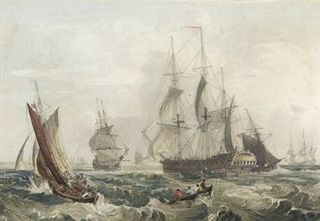
Samuel Owen was an English marine painter and illustrator.

Edward Duncan (1803–1882) was an English master painter, known for his watercolours of coastal views and shipping. He was a member of the Royal Society of Watercolours and received Royal patronage from Queen Victoria.

Christoforos Perraivos was a Greek officer of the Greek War of Independence, member of the Filiki Eteria and author. In non-Greek sources his name is usually found as Per(r)evo(s).
The public domain consists of all the creative works to which no exclusive intellectual property rights apply. Those rights may have expired, been forfeited, expressly waived, or may be inapplicable.

Michael Bryan was an English art historian, art dealer and connoisseur. He was involved in the purchase and resale of the great French Orleans Collection of art, selling it on to a British syndicate, and owned a fashionable art gallery in Savile Row, London. His book, Biographical and Critical Dictionary of Painters and Engravers, first published in 1813-16, was a standard reference work throughout the 19th century, and was last republished in 1920; however it is now badly outdated.








